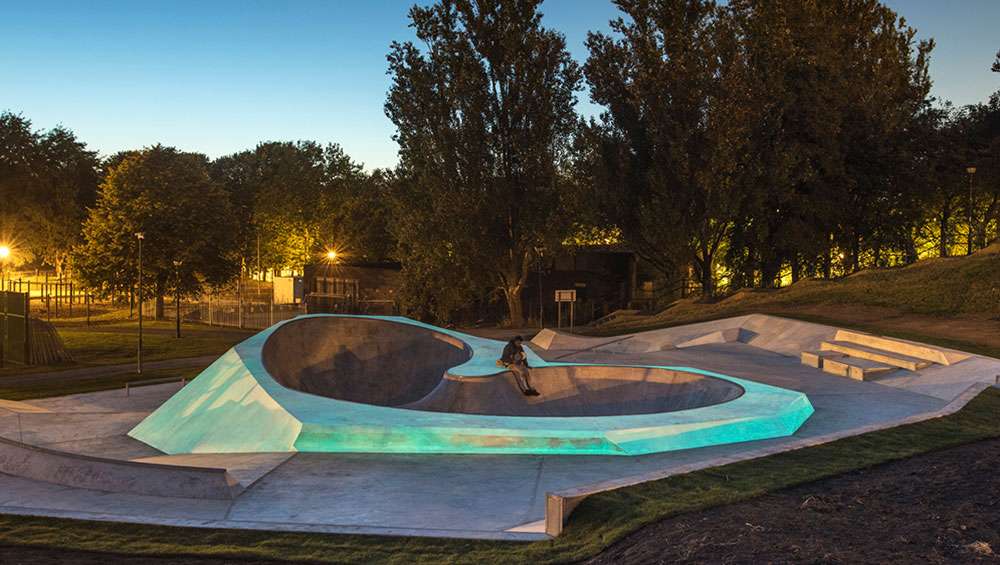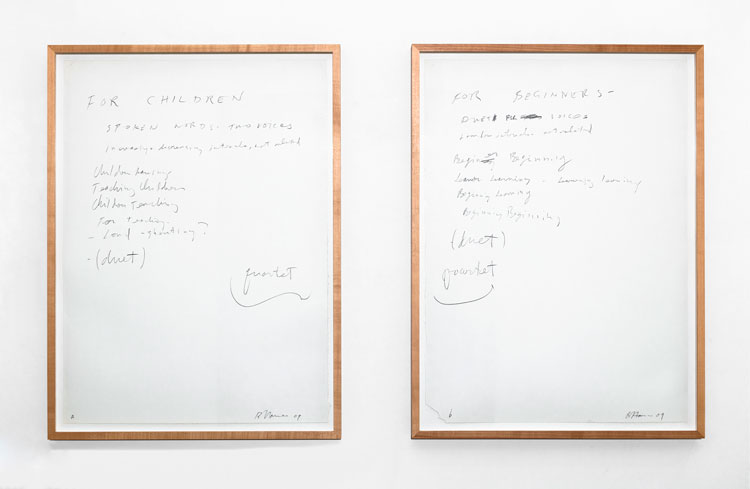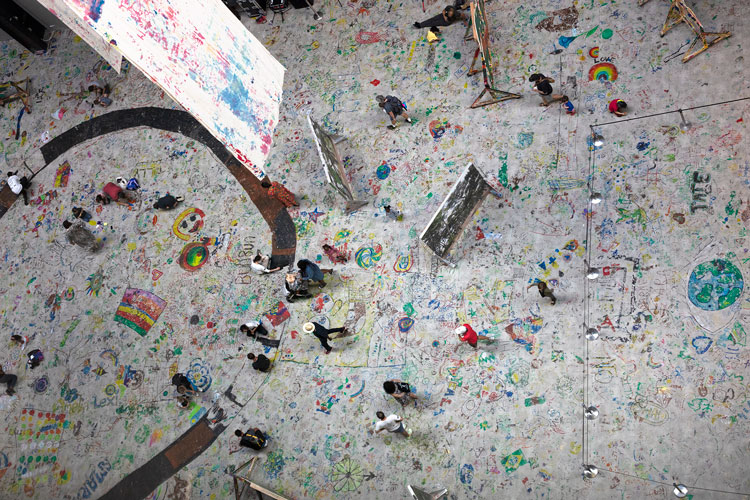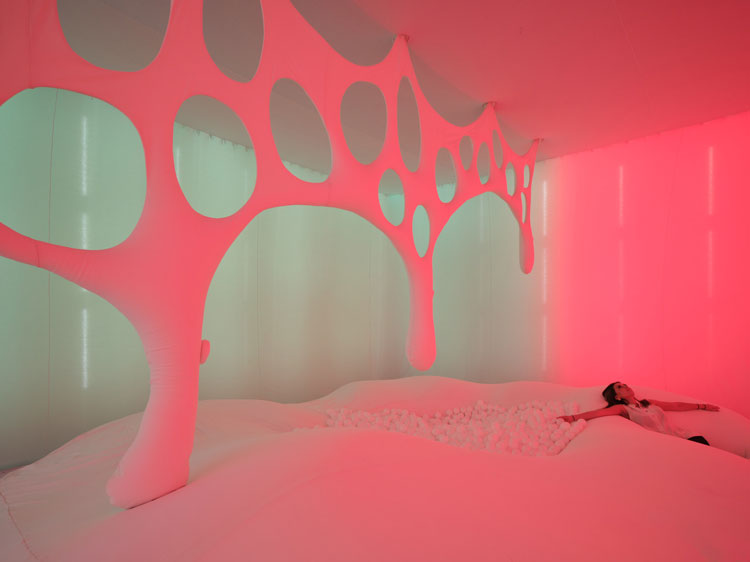
Koo Jeong A, x Wheelscape, Evertro, 2015. Liverpool Biennale, UK. Photo: Gareth Jones.
Haus der Kunst, Munich
18 July 2025 – 1 February 2026
by BETH WILLIAMSON
There is so much to say about this exhibition – about its subject, its method and its ambition. For Children is embedded within Haus der Kunst’s re-examination of art histories in a way that is questioning, experimental and joyful. In this respect it links to its previous exhibition Inside other Spaces: Environments by Women Artists 1956-1976. Work by female artists is one of several themes that continues to be reappraised in art history and while there always remains more to be done, it is at least increasingly visible. Not so work made for children. Although there have been some contextual exhibitions and approaches, none has been as focused and ambitious as this. In 2012, the Museum of Modern Art in New York presented Century of the Child, a survey of design for children from 1900-2000. This February, in London, the Young V&A launched its Making Egypt exhibition, which consulted young people in its making and demonstrated an embedded commitment to understanding how young minds engage with material culture. The same month, the National Gallery London opened its Roden Centre for Creative Learning, a state-of-the-art facility for children and families. In September, the Dulwich Picture Gallery in south London will open its new permanent ArtPlay Pavilion with a new site entrance and improved facilities for schools and families. All of this demonstrates the commitment of galleries to the needs of children and young people now. Children at Haus der Kunst in Munich, however, does something even more significant.

Bruce Nauman, For Children/For Beginners, 2009. © 2025 Bruce Nauman / VG Bild-Kunst, Bonn, Courtesy Sperone Westwater, New York.
What this exhibition does is to carve out a place in art history for work made for children. The exhibition title, by the way, comes from a work by Bruce Nauman. A sound installation in the museum foyer, For Children (2010), features Nauman repeating the title phrase aloud. Elsewhere in the exhibition, sketch-like conceptual scores or drawings For Children/For Beginners (2009) form the basis of the later sound piece. As the MoMA design exhibition of 2012 showed, art made for children primarily meant designing toys and children’s furniture, at least until the mid-20th century. What the present group exhibition recognises is that, from the late 1960s, artists began to make work that treated children as “equal and capable recipients”, even encouraging them as active participants and co-creators. Addressing children as a valued and valuable audience was something new and Haus der Kunst delves into developments across multiple gallery spaces, including a new third space off the terrace facing the Eisbach canal – Koo Jeong A has created a skating ramp that is freely accessible at any time of the day and invites new audiences. Similarly, Ei Arakawa-Nash asks everyone to enter the Mittelhalle and paint the floor in Mega Please Draw Freely (2025), a work inspired by the Japanese Gutai group.

Ei Arakawa-Nash, Mega Please Draw Freely, 2021. Photo: Brotherton-Lock.
It is important to say that, despite its title, this exhibition is not only for children. It is an invitation to look at the history of art for children since 1968, to rethink how we understand childhood in the contemporary moment, and also to consider the big universal themes that we all encounter first as children – humanity, society, politics, economy, environment, technology. The starting point is found in the Archiv Galerie where the happening actions of the Keks group are explored. Keks collective formed in 1968 within the context of Munich Art Academy, but went beyond the classroom into urban spaces. Navigating the space between art and education, Keks was invited to the 35th Venice Biennale in 1970 and widely recognised for its contribution, Biennale Bambini, the first art educational contribution in the history of the biennale. It is a great beginning to a show that really does lend new perspectives on art of the period.
While artists’ involvement in schools and learning in now commonplace in its practice and art historical consideration, this was not always the case. One early example featured in this exhibition is the work of the Cuban American artist Ana Mendieta. Her performance Parachute (1973) interrogated the presence and effect of individual and collective bodies in space and the resulting documentary film is profound.

Ernesto Neto, Uni Verso Bebé II Lab, 2007/2025. Exhibition view, Haus der Kunst München, 2025. Photo: Agostino Osio.
Ernesto Neto’s Uni Verso Bebé II Lab (2007/2025) was originally presented in 2007 as part of the Art for Children exhibition at Museu Vale in Brazil. Now, at the very heart of For Children, Neto’s glowing tent-like structure provides a soft centre, a womb of sorts, from which the entirety of the exhibition radiates. Its soft fabric creates a space of safety where awareness of the body is heightened and movement and thought are simultaneously slowed.
Sleeping, dreaming the stuff of nightmares and everyday childhood fears – Eva Koťátková and Anna Žofie Langová invite us to pay attention to our monsters, to make them our allies and not our enemies. Rivane Neuenschwander deals with hopes and fears too. She collaborated with Guto Carvalhoneto, working with children from across the world, to make a number of capes designed to shield them from their fears. The Name of Fear (2015-25) cover fears from rectangles, tomatoes and thunder, to ghosts, guns and global warming. While some of these may be childish fears, it also names those larger existential fears that we carry with us into adulthood.
,-2021.jpg)
Rivane Neuenschwander in collaboration with Guto Carvalhoneto, The Name of Fear/Vaduz (Enge Räume/People in Disguise), 2021. Cotton twill, polyester, quilt batting, pvc, buttons, 98 x 92 x 10 cm. Photo: Mateus Augusto Rubim.
Asking children about their fears is one way to include them in making art. Recruiting them on to the Youth Advisory Board is a way to include their voices in shaping exhibitions and that is what Haus der Kunst has done here. Established in autumn 2024, the board meets every two weeks, and it has given young people the chance to delve into the processes behind this exhibition from curatorial work to communications. Their perspectives were crucial in setting up the show, co-developing workshops and selecting topics to be addressed. I have mentioned only a handful of those international artists involved, but in addressing the art histories of art for children over the last half a century or so in the way that it has here, Haus der Kunst provides a model or benchmark for other museums. In a wider context, it underlines the continuing need to scrutinise art histories for those underrepresented groups while simultaneously listening to those same groups and opening up exhibitions to wider audiences.